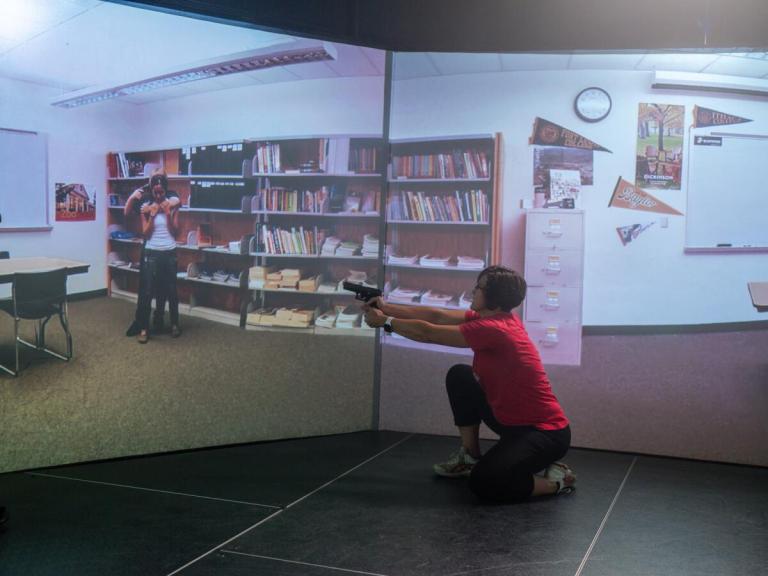Furries In The Classroom
For those of you who don’t know what a furry is (I certainly didn’t before I had them as students), allow me to explain. According to Wikipedia, “Furry Lifestylers” refers to a group of people who have “important emotional/spiritual connections with an animal or animals, real, fictional or symbolic.”
By ![]() Jane Morris
Jane Morris
I have had the interesting experience of teaching “furry” students. For those of you who don’t know what a furry is (I certainly didn’t before I had them as students), allow me to explain. According to Wikipedia, “Furry Lifestylers” refers to a group of people who have “important emotional/spiritual connections with an animal or animals, real, fictional or symbolic.” Being an animal lover myself, this seemed like something I could relate to. But this goes way beyond loving animals. Furries see themselves as “other than human” and “desire to become more like the furry species that they identify with.” I mean, I really love dogs. Some might even say I’m obsessed with them. But I’m pretty sure I don’t want to be one.
Furries take their furriness very seriously. They feel a deep kinship with a certain animal, and dress like that animal all the time, even at school. Many wear parts of the animal such as the ears and tail, or fake paws and an animal head. Each furry has a “fursona” or set of animal personality traits, which they use to role play in various forms, on the internet or at conventions, for example. These conventions, such as Anthrocon or ConFurence, draw thousands of people who share similar interests.
My first furry came to school on the first day wearing white ears and a long white tail pinned to the seat of his pants. It was so long that it dragged on the floor, picking up dust mites and other debris. I wasn’t sure what his deal was, so I didn’t ask him about what he was wearing. He offered that information for the class soon after.
I paired the students up and asked them to interview each other as a typical first day of school activity. The poor girl who was partners with the furry had a hard time keeping a straight face during the interview. Next the students had to introduce their partners to the class. They merely had to share the names, nicknames and hobbies of their partner. When it was time for the furry and his partner to present, they both stood up. The girl turned bright red before she spoke. “This is Herbert. He likes to be called… umm… Zorra. He says he’s a fox and-” Here Herbert interrupted with an irritated clarification. “I’m a silver fox.” She held back a laugh and said, “He’s a silver fox and is also… umm… He’s pansexual? That’s it.” At that point, most of the class was laughing. Herbert was extremely annoyed. I tried to defuse the situation by asking a few clarifying questions.
“Herbert I think we are just a little confused. What do you mean when you say that you are a silver fox?” He took a deep breath and said, “I embody the spirit of a silver fox.” The class was silent and waiting for my reaction. I calmly responded. “Okay, and what does it mean to be pansexual? I’ve never heard that word before.” He was slightly less aggravated now that he saw I was merely curious and seeking knowledge. “Pansexual means that it’s possible for me to be attracted to anyone.”
I quickly realized that I had gotten myself into a sticky situation, and I should have just moved on to the next group. But I was genuinely curious. “So it’s like someone who is bisexual?” I said, giving the class a serious look that meant they should not laugh. “No,” he said. “I’m pansexual. I don’t subscribe to labels. I’m just attracted to whoever I’m attracted to, regardless of what gender or species they identify with.” Another kid yelled out, “Thatmeans he’s gay!” Before I could answer, another kid said, “No! That means he has sex with animals!”
“Okay, that’s enough. Thank you for sharing Herbert and for being so open with the class. I appreciate it, and I learned something new today.” Before he sat down he said, “Yeah I’d just like to say one thing. I’m sick of being called Cat Boy. I am not a cat; I am a silver fox! These are two very different animal spirits.” Another kid yelled out, “Whatever Cat Boy!” and Herbert sat down with his arms crossed in anger.
The next day I met Herbert’s furry girlfriend. Her name was Alice, but she insisted on being called Loculo, which is Latin for “coffin.” She would not answer if you called her anything but Loculo. Loculo wore ears and a tail,but she also wore fake paw gloves. She refused to have anyone interview her, and she introduced herself to the class. She said that she was a wolf trapped inside a girl’s body and that she identified with a gray wolf in almost every way. She also said that she is very selective about her “pack mates” and relates mostly to herbivores. No one questioned her or said a word, including me. Something told me that for this student, her “fursona” wasn’t just a phase.
A few classes later I gave the students an assignment to create a fictional, future biography with an illustrated cover. This exercise was meant to be a way for them to picture what they might be successful at and well-known for later in life. I had them share their covers. Many students had silly, unrealistic drawings and ideas, but they had a lighthearted approach when sharing with the class. When Loculo shared her cover, the fear in the room was palpable. She stood up and showed the following drawing she made that featured a battered corpse.
She said, “My biography is called die träne, which means ‘the tear’ in German.” That is all she said, as she stood there holding up this horrifying picture. I asked, “What is this picture of?” She said, “This is a victim ofrape and murder.” I looked around the room at the shocked faces. I tried to find some normalcy in this while maintaining composure. “And why did you choose to put this on the cover of your biography?” (Why was I asking more questions? This couldn’t possibly lead to anywhere good.) She started to speak and stumbled over her words a few times. Finally she said, “I just find rapists and murderers interesting.”
“Oh,” I said. “So you are interested in psychology?” “Yes,” she answered.
Thank God, I thought.
“So you want to be a psychologist maybe? Perhaps work for the FBI as a profiler? Or a criminal psychologist?” I asked with hope.
“Yes,” she responded quickly.
“Great!” I said. Then she looked at me as though she saw that I was trying to find some normality in what she was saying and said, “Actually no. No. I just like rapists and murderers.”
I called Loculo’s mom to discuss her daughter’s behavior with her. She said, “Look, you’re not telling me anything new. My daughter is in therapy almost every day of her life. This is nothing I don’t know. But thanks for calling.”
I had yet another furry encounter when I covered a class for another teacher. They had a creative writing assignment to complete with a partner. I couldn’t help but notice two students were stroking each other like cats. They were also rubbing their noses on each other’s cheeks very gently. When they began to lick each other, I got nervous. Another student saw my face and whispered, “They think they’re cats. Just wait, they’ll meow soon.” It seemed like it had to be a joke but when I asked the teacher, he confirmed that they take their cat selves very seriously. He had arguments with the parents about whether or not their behavior was appropriate for the classroom. He gave up and just let them do their cat thing.
I would just like to add that it is perfectly okay for students to wear animal costumes in class, but hats are strictly forbidden. ![]()











